
Exploration of Napolian's Triangle
by
Nathan Wisdom

Exploration of Napolian's Triangle
by
Nathan Wisdom
Given any triangle ABC, construct equilateral triangles on each side
and find the center of each equilateral triangle. The triangle formed
by these three centers is Napoleon's Triangle.
We will use Geometer's Sketchpad to explore this problem. Here is a
picture of the problem.

One interesting result of this problem is that the segments joining each vertex of the
given triangle with the remote vertex of the equilateral triangles are
congruent.This result is very unusual because the given triangle we
started with is any triangle. How can this be?
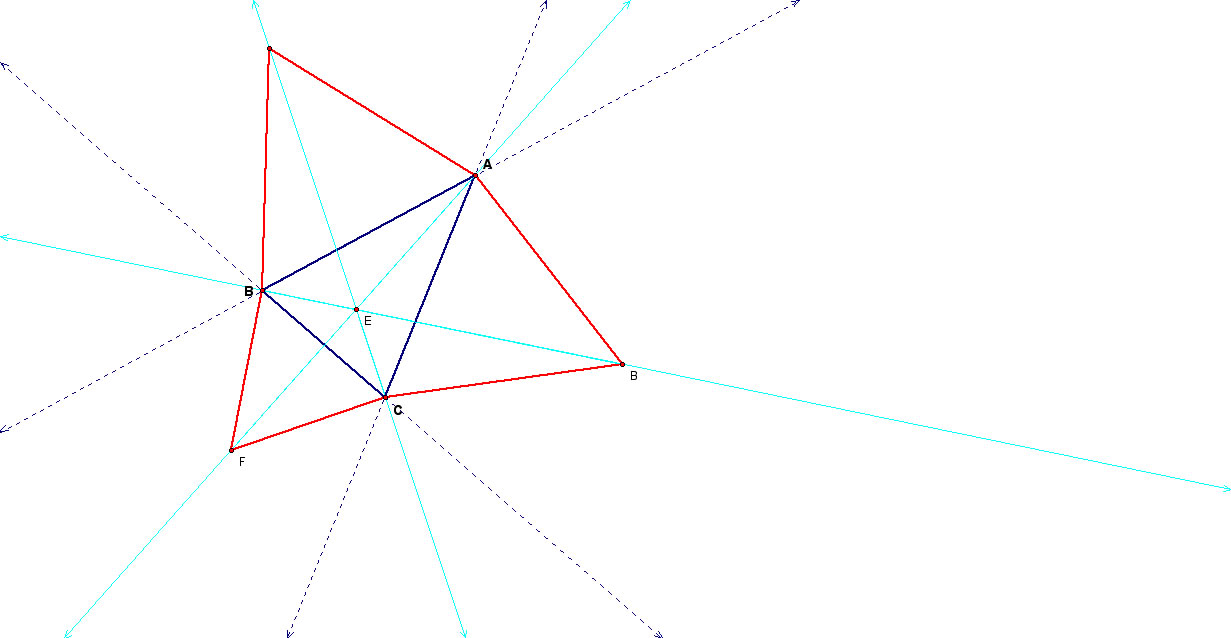
Proof:
The proof relies on selecting a set of congruent triangles.
|
Another fascinating result is that the Napolian triangle is
equilateral.
Recall that we began with any triangle. How can this be?
Proof:
This proof used the properties of a cyclic quadrilateral and the
circumcircles of the three equilateral triangles.
|
Another unusual and fascinating result is that the point P is a
point of concurrency of both the circumcircles of the three equilateral
triangles and the segments joining the vertices of triangle ABC to
the remote vertices of the equilateral triangles.
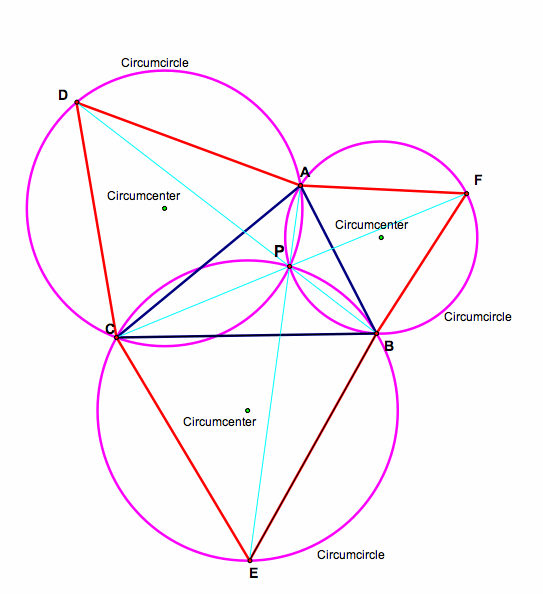 |
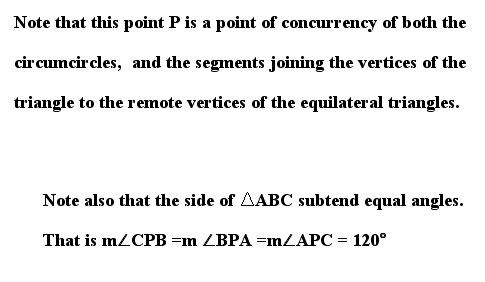 |
Furthermore, the point P is the only point in the triangle where the sides
subtends equal angles. To investigate this result we now look at a related problem.
Fermat (1601- 1665) posed the problem: In a given acute angled triangle ABC, locate a point P whose Euclidean distances from A, B, and C has the smallest possible sum.
The problem was first solved by a student of Galileo, Evangelista Torricelli (1608- 1647)
|
|
These results are very unusual, and fascinating. Recall that we began with any triangle. We can use Geometer's sketchpad to
explore the location of the point P for any triangle. Where would the
point be if we have a triangle with one angle measure 120 degrees?
What if we move point C to be on segment AB, will the results hold then?
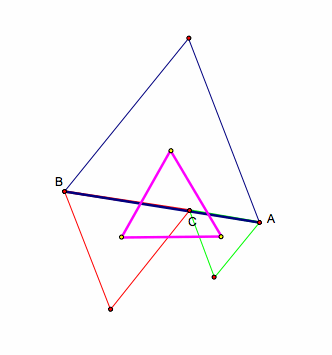
Using GSP we can conjecture that the result holds.
We constructed the triangles externally to triangle ABD. What if we
construct the equilateral triangles internally?
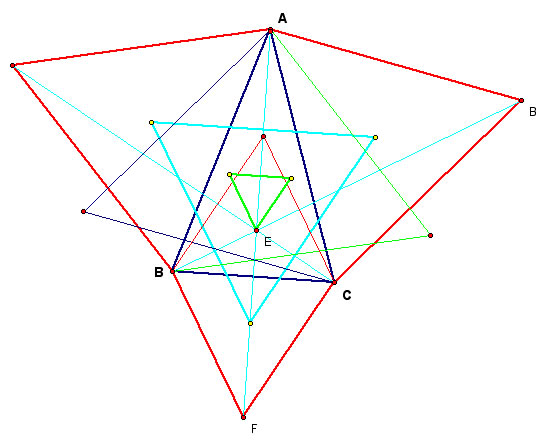
Finally, what if we construct the congruent triangles on the given
triangle. What will the triangle of centers be?
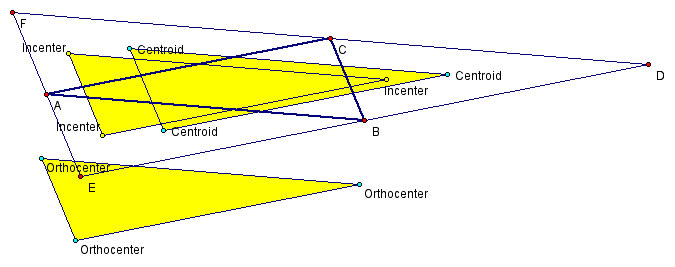
In this case we need to specify the centers that we use. Why? Are theses triangle of centers congruent? Proof?
Extension: What if we construct triangles that are similar to each other. What can be said about the triangle of centers?